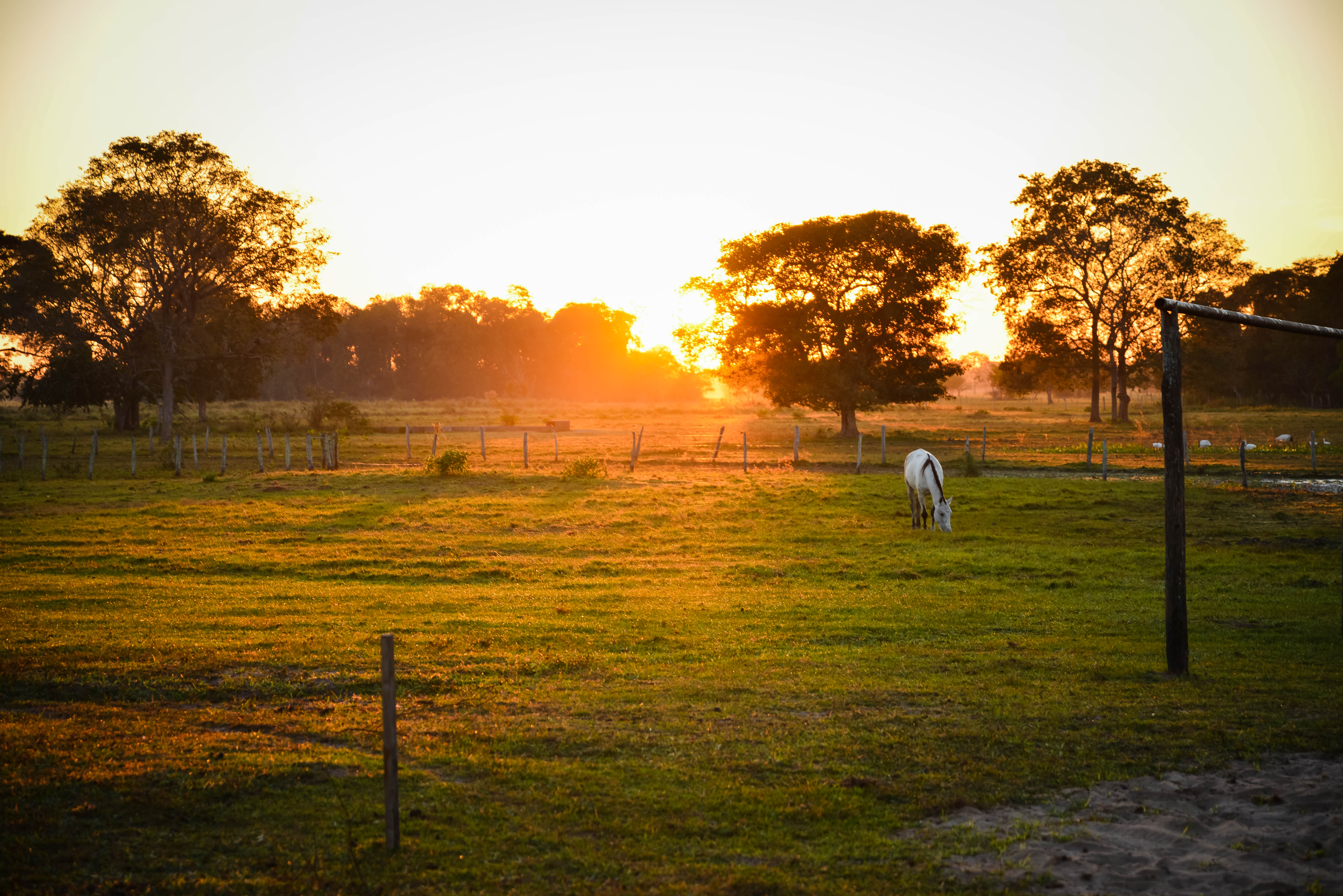Brisbane to Brazil
Written by Sarah Martin
This is part one in a 5-part series about life on a cattle station in Brazil.
Vivid. It was the only word we could find to truly describe how Brazil felt to us. The culture, the food, the animals, the music, the traffic. Everything in Brazil just seemed so much “more”. One memory that has stuck with me was standing at the airport as Tiago spoke to us with this pained expression that became all too familiar by the end of our trip, “Please, just don’t be crazy gringa locas.” Lindsey and I looked at each other confused. Back home in Australia we were more than capable, independent educated people. But we were like fish out of water in Brazil and the name gringa locas (crazy white girls) ended up sticking.
The three of us met in 2013 in a small town called Gatton, located between Brisbane and Toowoomba in the Lockyer Valley in Queensland, Australia. Lindsey had come from the UK to study a PhD in cattle nutrition and Tiago, from Brazil, was just starting his PhD in the same area. I was finishing my Bachelor’s degree. It’s always funny to think that at no point boarding that plane to Australia 4 years ago would Tiago have dreamed that he’d be back in Brazil with two crazy gringas in tow, heading out to his cattle property in the Pantanal.
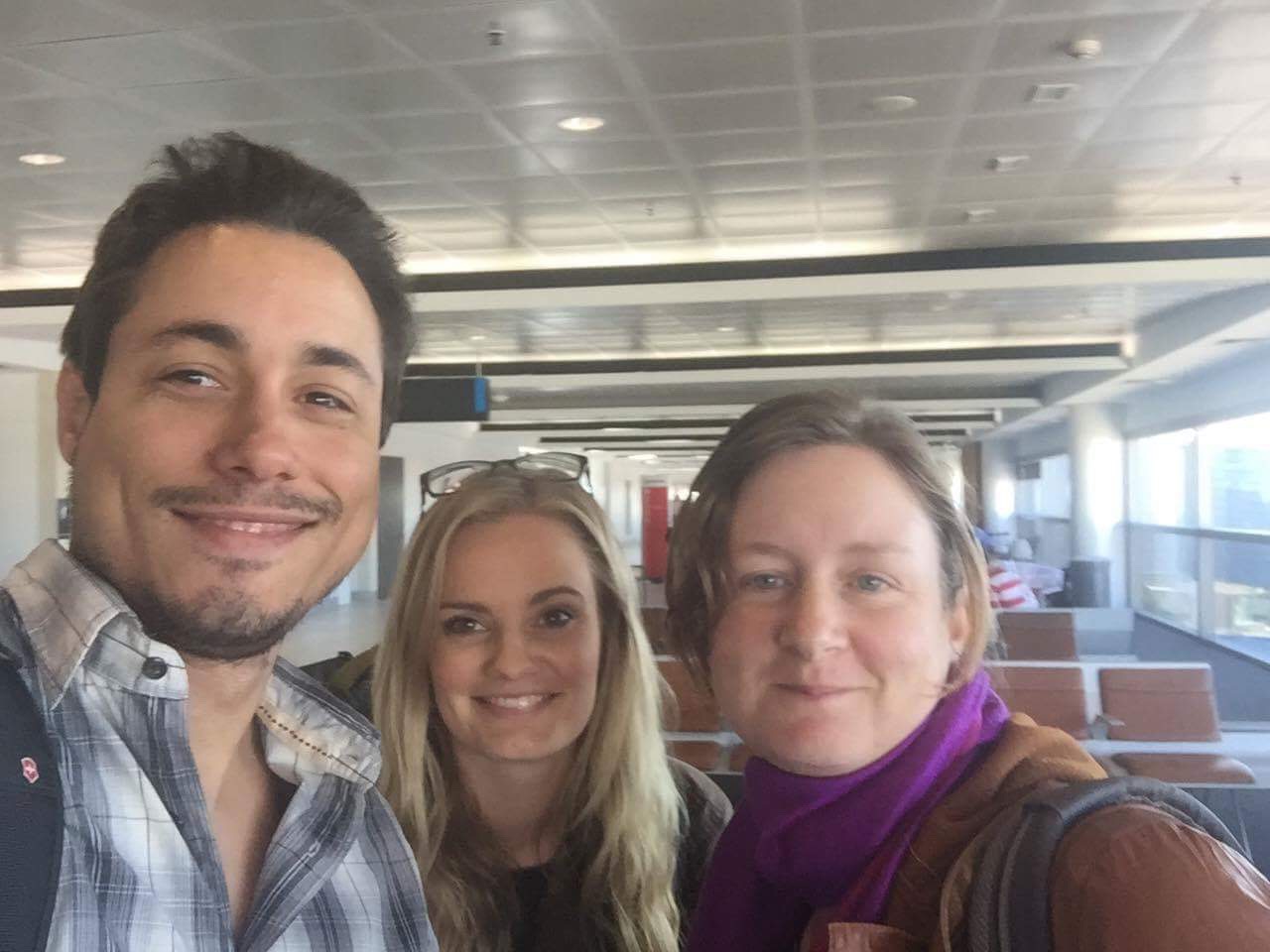 A quick snap at the airport.
A quick snap at the airport.
We flew into Campo Grande on our first night, the capital of Mato Grosso do Sul, one of the Midwestern states of Brazil. Campo Grande translates in English to “Great Field” and is nicknamed the Swarthy City due to the colour of the region’s soil. It was a 6 hour drive from Campo Grande to Aquidauana, Tiago’s home town. Mato Grosso do Sul has humid subtropical and tropical climates. I was surprised at how familiar the landscape was, there was very little difference between here and Far North Queensland where I grew up. If I hadn’t known any better I could have convinced myself that I was driving between Cairns and Townsville.
As we left the metropolitan areas, cattle became the most prominent feature in the landscape. Mato Grosso do sul is one of the top beef-producing states in Brazil. Alongside cattle, Mato Grosso do sul is also home to vast areas of cropping land. Some of the main crops produced in the state are soybeans, maize, wheat, peanuts and sugarcane. In fact, Brazil is the world’s largest sugar cane producer, responsible for 70% of worldwide sugar demand. The history of sugar cane in the country was quite interesting and the discussion we had in the car regarding its history stuck with me. Sugar cane was introduced to Brazil by the Portuguese in 1532 when it was almost as valuable as gold. Tiago then told us about how in recent years there was a point where it was cheaper to buy one litre of ethanol produced from sugarcane and used as fuel than it was to buy a litre of water. My experiences with Brazil’s sugarcane products mostly surrounded Cachaça (a spirit made from fermented sugarcane juice). But I honestly couldn’t tell you what the difference between Cachaça and fuel actually was.
Our travels did not go off without a hitch however. Thanks to our airline, we arrived at Aquiduana with no luggage. Despite itching to be out on the property, we were stuck in town trying to work out where in Brazil our belongings had disappeared to. And although it seemed like a burden at the time, in hindsight I really enjoyed those days spent getting to know Tiago’s family, who welcomed us with such enthusiasm and delight that I never once felt even a little bit homesick. Tiago’s father, Nilton, spent a great deal of time helping us to pick up snippets of Portuguese – which I practiced on the dog, Lotus.
After fruitless day of chasing airlines, Tiago’s mum suggested that we just borrow some of her clothes and head out to the farm. It goes to show how it doesn’t matter where you are in the world, you can always rely on country folk to lend a helping hand. Dressed in a pale blue work shirt with white embroidery at the shoulders, old blue riding jeans and a Caranda hat, we loaded the ute and left for Fazenda Carandazal, or what us Aussies would call Carandazal cattle station.
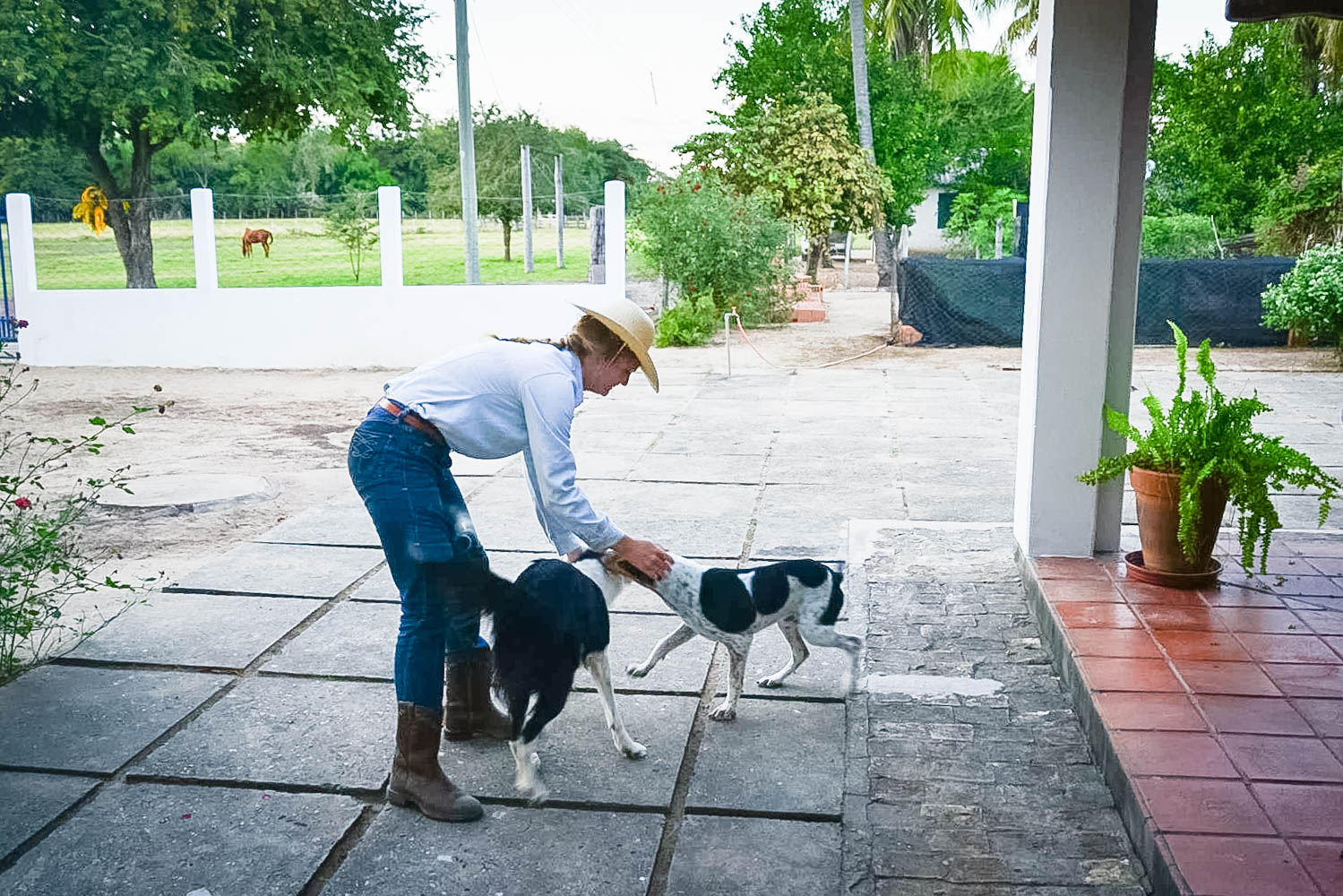 Practicing Portugese on the dogs.
Practicing Portugese on the dogs.
Getting to Fazenda Carandazal meant entering into the Pantanal. Suddenly, the landscape was not so familiar – que we’re not in Cairns anymore Toto! The Pantanal is the world’s largest tropical wetland, sprawling over approximately 195,000 square kilometres. Our hosts graciously stopped for us to get out and do the tourist thing when we spotted deer, capybaras, birds (those stork things), anteaters and quatis. They taught us the native names for each animal, names which mostly derived from the indigenous language. The Pantanal is a giant basin, each year the floodplains are filled with torrential rain which submerges the landscape. During the dry season however, the water drains into the Paraguay River leaving behind freshwater pools filled with fish which in turn attract the abundance wildlife we were seeing.
Our appetite for photos was quickly satiated when we realised that environment around us was absolutely teeming with life. We climbed into the tray of the ute and spent the rest of the dirt road drive spotting wildlife. Having grown up on the land, like many graziers, Tiago was a wealth of knowledge when it came to the plants and animals that he’d lived alongside all his life.
The car came to a stop as a mob of cattle stepped onto road ahead. Three pantaneiros, the name given to the cowboys of the pantanal, guided them from one paddock to the other riding mules. The pantaneiros have to move their herds in sync with the wet and dry seasons – the same as the jackaroos in the top end. Dust filled the late afternoon air as the mob moved on, one of the pantaneriros waved a greeting to Nilton as we passed – they worked on the neighbouring property.
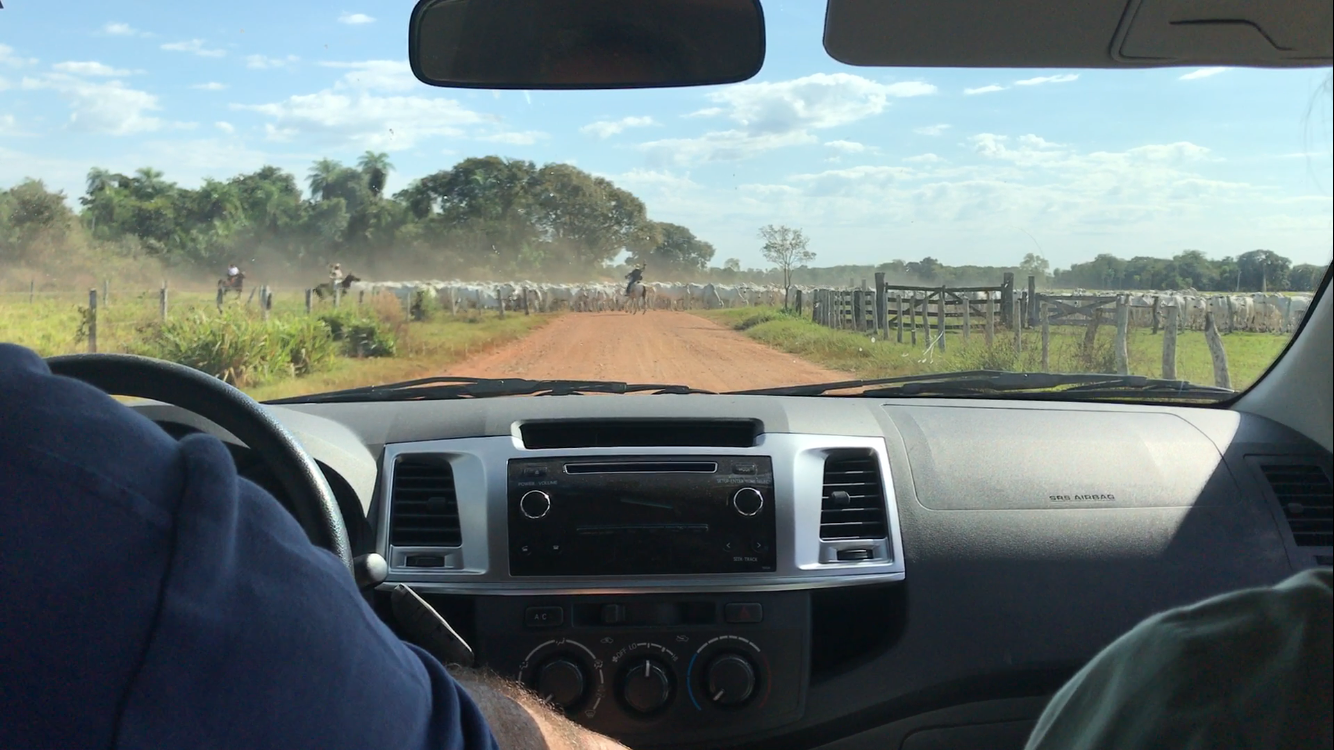 Pantaneiros moving their heard.
Pantaneiros moving their heard.
It wasn’t long before we turned onto the station access and “FAZENDA CARANDAZAL” appeared on the horizon in big white letters over the gate. The familiar smell of horses and cattle lingered on the air, mixing with the unfamiliar smell of the jungle. Two macaws took off screaming from where they’d been perched on the cattle yards, joining the throng of other birdcalls while horses and mules grazed in the paddocks surrounding the homestead.
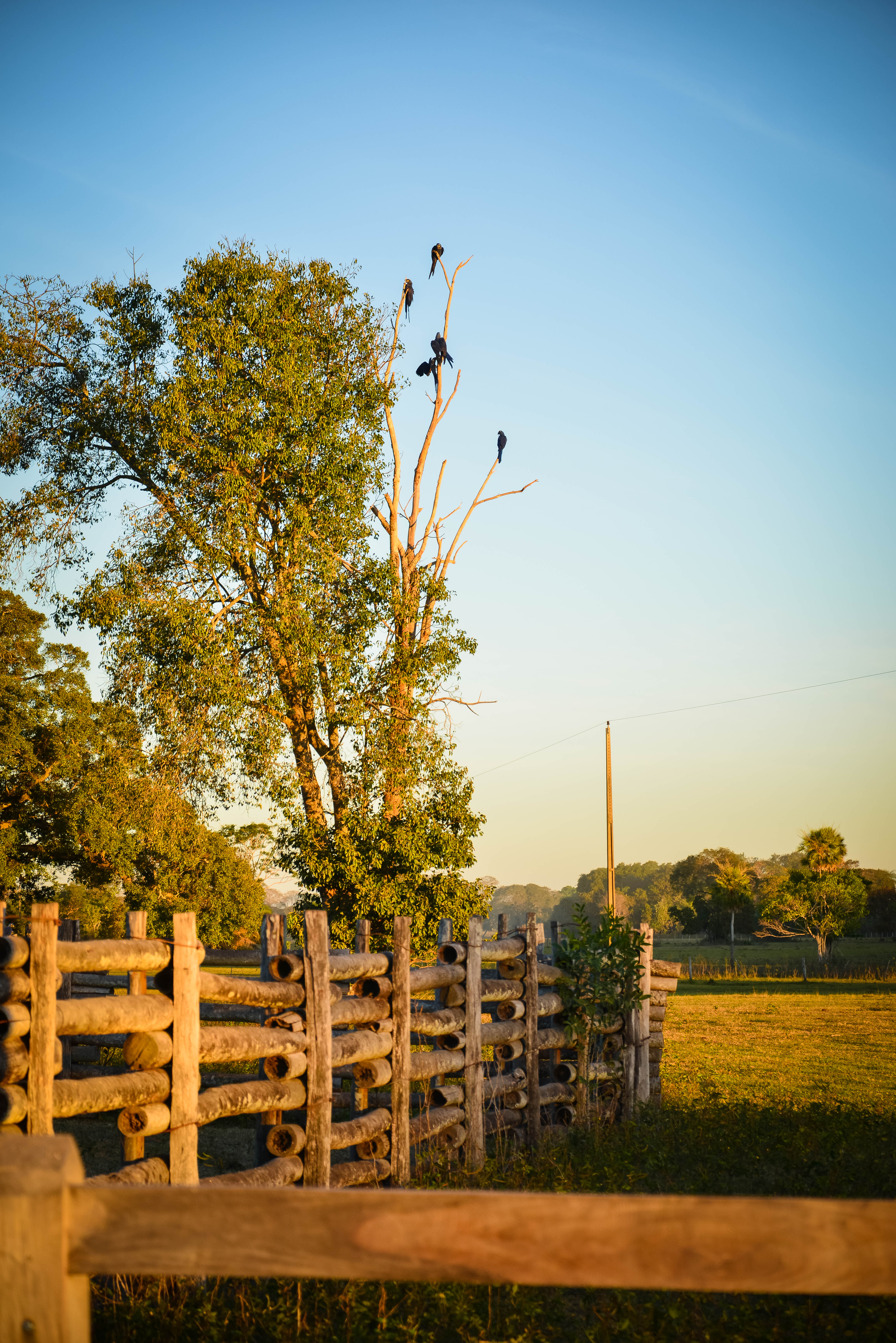
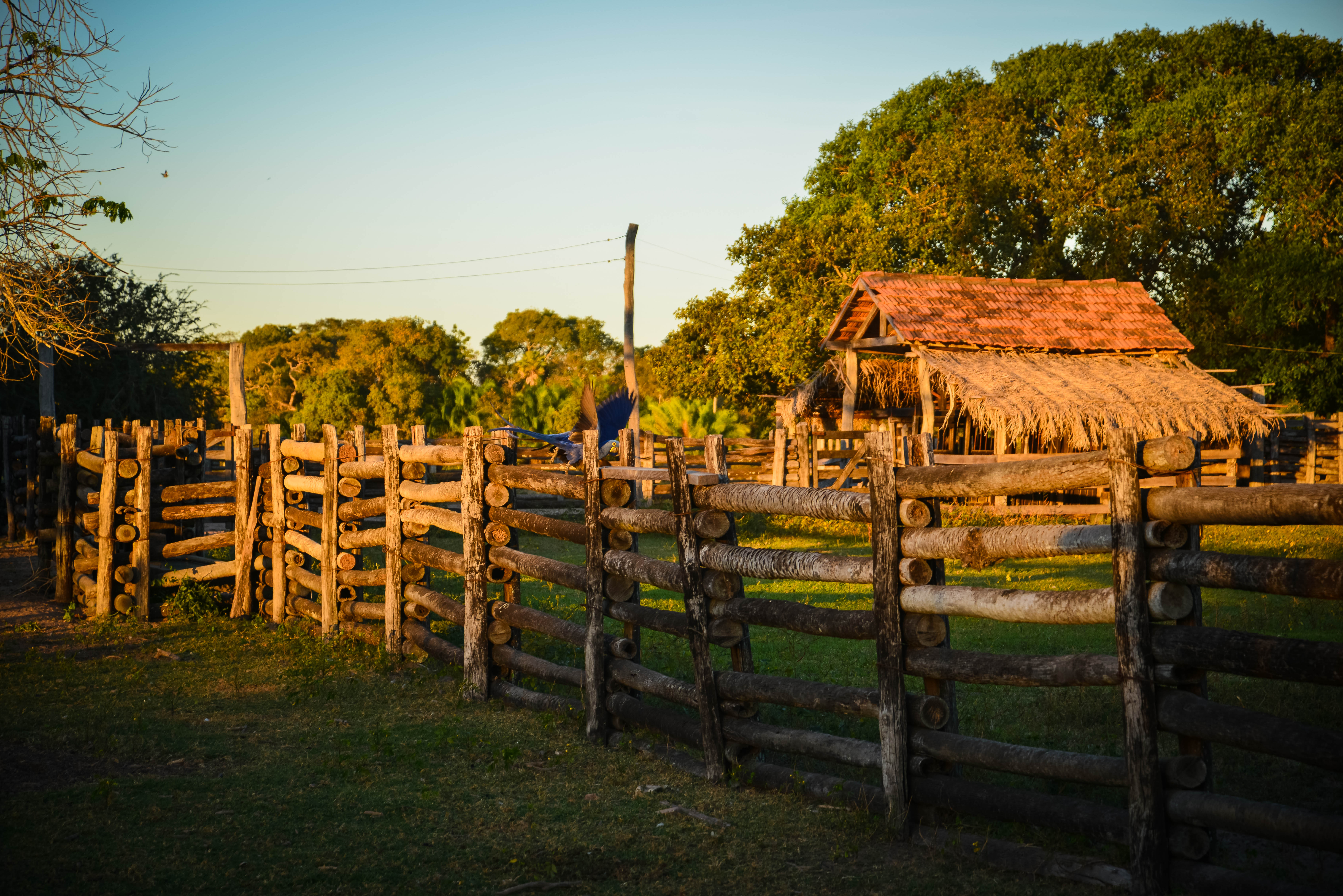 Can you spot the blue Macaw?
Can you spot the blue Macaw?
I had a few brief moments to take in my surroundings before we grabbed our bags to get settled in. Dinner conversation revolved around tomorrow’s jobs and some lessons in Portuguese. We were to be down by the tack shed by 5am the following morning to muster – otherwise called rodeio by the pantaneiros. Despite it being the middle of the dry season, there was still plenty of water on the property and Tiago sent us to bed with some sound advice for the morning
“Just don’t step on any alligators and you’ll be fine”
